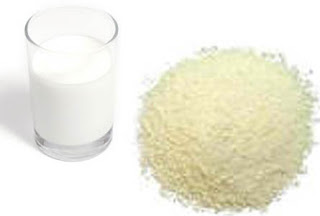Do you ever heard about Gold Mine from Old from Motherboard ? It is real, not just a gossip. Gold (chemical symbol Au), principally used in jewelry, is also used generally in manufacturing (and by the electronics and computer industries in particular) due to its excellent thermal and electrical conductivity, resistance to oxidation, and inalterability. The computer industry uses several hundred tons (318 tons in 2003, for example) of the element every year.
The precious metal is found in almost all computer components--processors, motherboards, extension cards, memory DIMMs, and so on. Of course, the amounts used in each part are infinitesimal. But with the price of gold skyrocketing in recent years, it’s becoming more and more economically-viable to recover gold from old electronic and computer components than to mine it. That’s why specialized companies have sprung up to do just that.
Today, we're going to show you how we recovered the gold from old motherboards using do-it-yourself methods. Please note: The chemicals used in this demonstration are extremely dangerous, especially in the concentrations used. Therefore, we strongly discourage you from attempting to reproduce this experiment at home.
Gold is found in numerous places on a motherboard: IDE connectors, PCI Express slot, PCI, AGP, ISA, and other ports, jumper pins, the processor socket, and DIMM (SIMM on older motherboards) slots.
All of these connectors are often covered with a fine layer of gold a few microns thick, deposited by flashing or plating.
So, the first stage of our experiment is to recover all these pins and connectors. We need pliers and cutters, flat and Philips screwdrivers, and liberal amounts of elbow grease...You need a lot of pins to conduct this experiment, and that's exactly what our donor boards provided...along with some equipment and chemicals.
To recover the few micrograms of gold deposited on the pins, we’re going to use an electrolytic cell. The bath consists of a 95% solution of sulfuric acid. The cathode is lead and the anode is copper. The pins are placed in the copper anode, which we’ve formed into a basket shape. By running an electrical current through the cell, using an ordinary battery charger, the copper in the anode (and in the pins) dissolves and is deposited on the lead cathode. The gold, detached from the copper, forms a sediment at the bottom of the cell. Also note that the temperature of the bath increases significantly during this process.
Once all of the gold has detached from the pins, the bath is allowed to settle. Then, we recover as much of the sulfuric acid as possible, before diluting what remains in the bottom of the electrolytic cell.
Be careful to always pour acid into water, and not the other way around! If you do it wrong, the first drops of water that touch the surface of the sulfuric acid will immediately be vaporized and could cause acid splashes.
We end up with a diluted solution of sulfuric acid, various metals (including gold), and waste that then needs to be filtered. Why not just filter the solution directly, without diluting it? Because paper filters don't stand up well to strongly concentrated sulfuric acid. That's why.
What remains in the filter is a mixture of various metals and impurities. We now dissolve everything in a mixture of hydrochloric acid at 35% and chlorine bleach (sodium hypochlorite) at 5%, in a proportion of 2 to 1.2 HCl + NaClO -> Cl
2 + NaCl + H
2O
Careful! The reaction is highly exothermic and produces chlorine, a highly dangerous gas. Chlorine gas was used as a chemical weapon during the first World War, under the name bertholite.
In fact, the chlorine produced by mixing hydrochloric acid and chlorine bleach is what will dissolve the gold to form gold(III) chloride.
2 Au + 3 Cl
2 -> 2 AuCl
3Now, all we need to do is filter everything once again. The filter will retain all the impurities, leaving only a gold(III) chloride solution.
To recover the metallic gold, we now need to precipitate the gold that’s in solution. For that, we use powdered sodium metabisulfite. In the presence of water, the sodium metabisulfite produces sodium bisulfite.
Na
2S
2O
5 + H
2O --> 2 NaHSO
3This sodium bisulfite is what will allow the gold to precipitate.
3 NaHSO
3 + 2 AuCl
3 + 3 H
2O --> 3 NaHSO
4 + 6 HCl + 2 Au
We let the solution settle, then we recover the brown powder collected at the bottom of the beaker. We have to be careful not to lose any--that’s metallic gold!
Now, all we need to do is to melt the powder in a crucible.
The melting point of gold is around 1064° C (1947.52 °F), so an oxy-butane torch will do the job.
The result is a pretty gold BB!
Economically speaking, is it worth all the trouble? Definitely not. The process is only viable if it’s done on an industrial scale. The little ball of gold we recovered is only worth two or three dollars at current prices. And in fact, companies that recover the gold from old computers use other techniques and chemicals that are even more dangerous. But it’s still interesting and fun to know that it’s technically possible to recover gold from motherboards using a homemade process.
source: Tom's hardware































